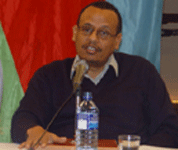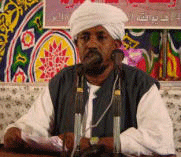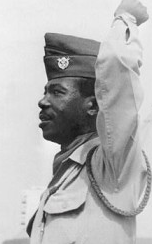| Killon (194) The finall disintegration of the old ELF, followed by the death of Osman Saleh Sabe in 1987, and the rise of a strong movement towards Islamism among Abdella faction, the newly formed Islamic Jihad and another ELF-UO faction led by Omer Burj.According Awate. com Eritrean Islamic Islah Movement (Islah) & Eritrean Islamic Party for Justice & Development (Alkhalas): One of the by products of the collapse of the ELF, which had largely managed to subdue Islamist tendencies, these two Islamist groups owe their origins to the late 1980s when the EPLF, following the collapse of the ELF, took control of the Western lowlands regions. Alkhalas was originally called the Eritrean Islamic Jihad Movement but changed its name to Alkhalas in 1998. Over the years, like most of Eritrea's organizations, the group now has other splinter groups including Eritrean Islamic Congress led by Hassen Salman (aka Abu-Bara’e) and other smaller groups. Alkhalas is led by Amir Mohammed Aamr and AlIslah is led by Mohammed Ahmed Saleh (aka Abu Suhail.) Websites: Islah – islaher.org ; AlKhalas: alkhalas.org. The two organizations were at their peak in the late 1980s and 1990s when the environment, particularly the prevailing environment between Eritrea and Sudan, provided them with safe sanctuary and moral/financial assistance. Despite aggressive campaigns by the Eritrean regime to list these two organizations as "terrorists", they are classified as a pressure groups because they have no cross-national aims and they do not target civilians. [Source Proliferation Of Armed Resistance In Eritrea-http://www.awate.com/portal/content/view/4660/9/ |





